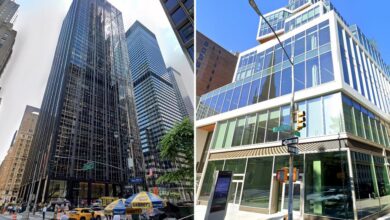Here’s what Donald Trumps tariffs mean for braids and wigs

Struggles of Black Hair Care Industry Amid Rising Tariffs
As the summer heat approaches Atlanta, therapist Brittanee Sims faces a dilemma – the cost of getting her hair braided has increased due to President Donald Trump’s tariffs. Many Black women, like Sims, rely on the Black hair care industry for essential products, but the rising prices are squeezing both shoppers and stylists.
Trump’s tariffs have impacted the prices of synthetic braiding hair, human hair for extensions, wigs, weaves, and styling tools, among other products. Most of these items are imported from China, which was hit with a 145% tariff in April. This has led to increased costs for both consumers and businesses in the industry.
Black women often spend hundreds of dollars monthly at salons for extensions, weaves, wigs, and braids. The rising prices are causing stylists to consider raising their rates, which could further burden clients already struggling with financial decisions.
Stylists in Atlanta are feeling the pinch as they are paying more for hair from China. Shipping costs have doubled, and some products have seen significant price hikes. This has forced some stylists to consider sourcing hair products from alternative suppliers or increasing their prices.
The uncertainty in the industry has led to concerns about future price increases and supply shortages. The global Black hair care industry, valued at $3.2 billion in 2023, is facing challenges as stylists and consumers navigate the impact of the tariffs on essential products.
While some salon owners are trying to absorb the cost increases, others are considering passing them on to consumers. The dilemma of balancing quality and affordability is a pressing issue for many in the Black hair care industry.
As the industry braces for potential price hikes and supply chain disruptions, the future remains uncertain. The impact of the tariffs on the Black hair care industry highlights the challenges faced by both stylists and consumers in maintaining essential beauty standards.
Despite the hurdles, the dedication of stylists like Hawa Keita, who prioritize customer satisfaction, continues to drive the industry forward. As Black women navigate the changing landscape of the hair care industry, the need for affordable and quality products remains a top priority.
Addressing Inequality in the Beauty Industry
The rising prices in the Black hair care industry also shed light on broader issues of inequality and beauty standards. Black Americans, especially women, are often faced with unfair beauty standards that favor European phenotypes.
The disparity in household incomes between white and Black households further exacerbates the challenges faced by Black women in affording their hair care. The issue of affordability and accessibility in the beauty industry is a reflection of deeper societal inequalities.
As stylists like Mitzi Mitchell prepare for potential price increases, the focus remains on providing safe and quality services to minority clients. The impact of rising tariffs on the Black hair care industry underscores the need for equitable access to essential beauty products and services.
Amidst the challenges posed by tariffs and economic uncertainties, the resilience of stylists and consumers in the Black hair care industry remains a testament to the importance of inclusive and affordable beauty standards.





